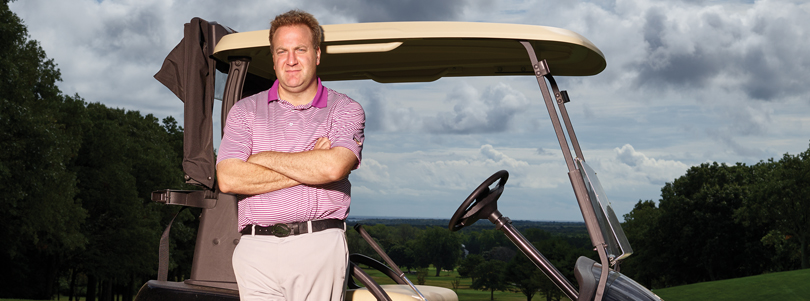Golf Science – Golf in 3D

As this is AVIDGOLFER Magazine’s Golf Science column, it seemed completely à propos to acquire some insights about the golf swing from Michael Jacobs, who recently authored the book “Science of the Golf Swing”. Jacobs is a Golf Digest top 50 and Golf Magazine top 100 golf instructor and has also been, at 40 years old, Golf Digest’s best young teacher. He runs, according to his website, the most technologically advanced lesson program in the world at Rock Hill Golf and Country Club in Manorville, on New York’s Long Island.
Why was Jacobs interested in golf science at all? He says he’s always been a swing junkie since he was 18 years old, and always wanted to improve his own game and, importantly, that of all of his students. He started out studying the Golf Machine and The Search for the Perfect Swing early on in his career, and has subsequently acquired a library of 4,000 golf books. He has also sought out all the researchers who study the biomechanics of the golf swing.
Having spent time with most of the handful of professors who study golf biomechanics, Jacobs realized that one of them – Dr. Steven Nesbit – was better than the others; a genius. Many, according to him, only have fringe knowledge of golf and essentially base their findings on a two-dimensional analysis and on the now dated double pendulum model in which the upper and lower pendulums moved on a single plane.
So, what has Jacobs discovered from the over 2,000 players that have been captured through Dr. Nesbit’s study that can be of use to the average golfer? Three-dimensional analysis can indicate which of three axes of rotation the golf club is swinging around and in which directions it is moving as a golfer applies a push or pull force to it. In order to square the club face at impact, each golfer uses his or her own grip style and applies different combinations of club rotations.
Advice to golfers: at the transition from backswing to downswing phase, the force that is applied to the club is just a little more than the force of gravity, so a golfer should not have a “major forcing expedition” at that stage.
Then, the downswing path the club takes will determine a golfer’s ability to push or pull the club. If the hands move the club in a very wide path at the start of the downswing, it prevents the club from snapping out, closer to impact. If the hands’ path is the desired narrow, curving path, it excites the correct club path.
Finally, golfers should not try to put all their effort into driving the club towards impact, because the force is supposed to decrease slightly at impact, and too much force at that stage would make it peak too early and change the direction of the club. Let the club come around, don’t drive it. Basically, a golfer should understand that the club is not simply being slugged back and down, but rotates in three different ways, and that is what will affect club speed and the squaring of the club face.
This golf science is the future and will become more and more mainstream, according to Jacobs, who, after the completion of his latest book on the forces and torques applied by the hands, will soon be publishing information on the role of the body in the golf swing.
Kiran Kanwar is the developer of The Minimalist Golf Swing System -100% scientific, simple and specific. She has BS degrees in physics and math; MS degrees in sports science and nutrition; and is pursuing a PhD in biomechanics. She is a Class A Member: the LPGA, The NGA of India, The PGA of India. Visit her website: www.mgs.golf



